The Bavarian Raitts
From manuscripts and books held in various libraries in Bavaria, Germany, I have come across several different men in that state with the surname of Raitt. They seem to have in common similar coats of arms, the elements of which also make up the coat of arms assumed to belong to John Raitt (1735-1803) who became Sheriff of Arundel County, Maryland. Detailed descriptions of these coats of arm are given on the page Other Raitt Arms. The story of John Raitt and his descendants is told on the page for the Maryland Raitts. The same arms are also said to be the arms of some Maine Raitts.
Three of these men (Steffan Raitt, Johann Arnold Raitt and Gabriel Raitt) are known from Siebmacher’s Wappenbuch, where their arms are recorded - as is another family called Raitt, but for whom no individuals are given, although the (different) arms are. There are also details of another man named Hans Georg Raitt, though his arms are not recorded. Two other men, Hugo Raitt and Christoph Raitt are known from their bookplates. And one man, Marcs Raitt is known from a book he wrote. In addition there is the family of Raitt of Raittenstein (or Raidt of Raidtenstein) whose arms are also recorded - they are dissimilar to the Raitt arms mentioned here, but do bear some resemblance to the other Raitt family noted above. (For good measure there is also a Heinrich Rait - though he is from Aachen (North Rhine-Westphalia) - some distance from Bavaria. His arms and some details are included on the Other Raitt Arms page.
We have the following information about these individuals.
Steffan Raitt
Nothing known apart from his coat of arms
Johann Arnold Raitt
He was a knight from Kürnstein, with a coat of arms similar to those of
Steffan except different colours.
Hans Georg Raitt bought the estate of Unterbruck (Amt Waldeck) from Hans Christoph Ruprecht in 1634. Presumably this is the Unterbruck near Regensberg in Bavaria. No arms are given.
Marcs Raitt
He is probably more likely to be Marcus or Mark. He was a knight in Kirnstein and is known from a manuscript that he presumably wrote rather than owned entitled “Memorabilia variarum rerum” (Narrative accounts of various things). The document was published in 1566, comprised 178 pages, and covered such topics as history, geography, natural history, ethics, politics. It also included his poetry.
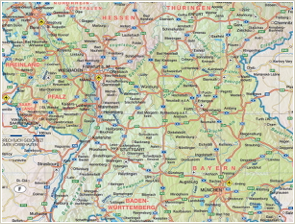
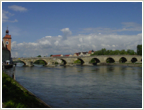
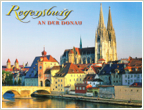
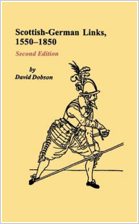
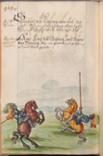

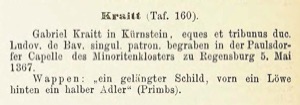

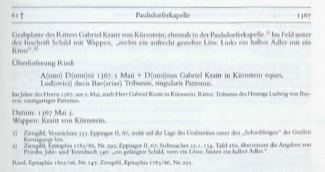
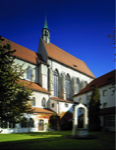
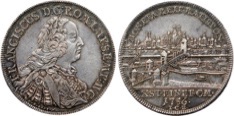
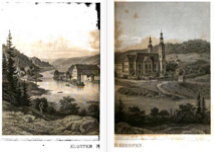
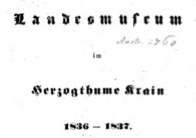
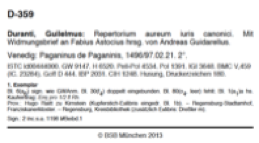
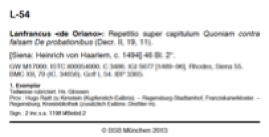
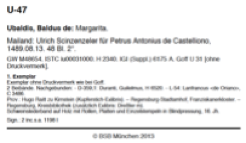
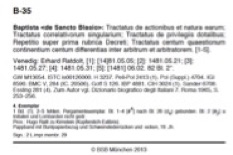
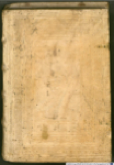
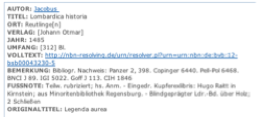
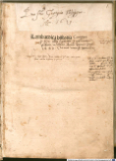
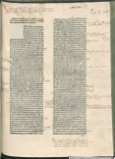
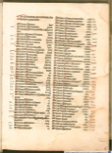
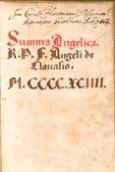
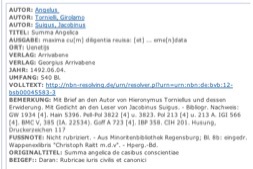
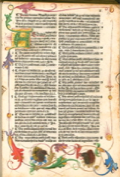
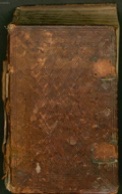
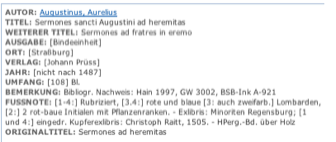
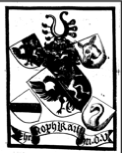
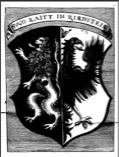
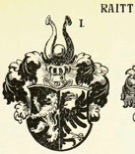
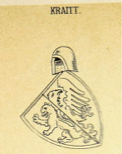

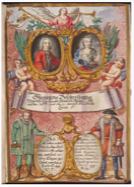
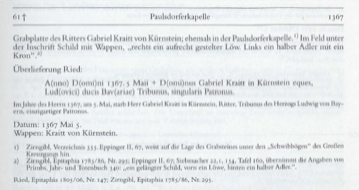
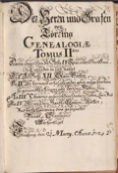

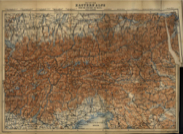

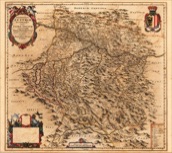
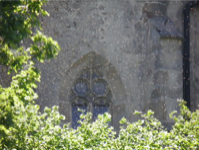
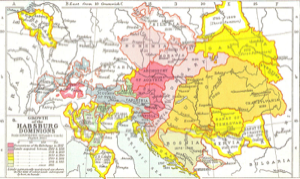
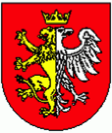
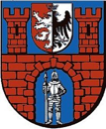
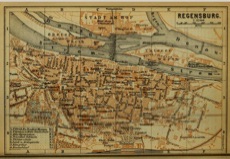
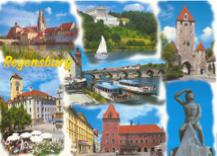
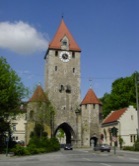
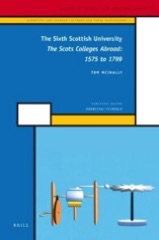
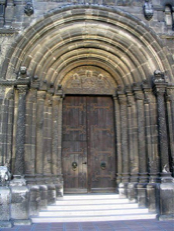
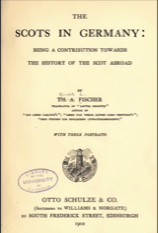
Searching for reasons why these Raitt men might have been in Regensburg (Ratisbon) I did some further research and came across a recent book by Tim McInally entitled “The Sixth Scottish University: the Scots Colleges Abroad: 1575-1799”. The book includes a discussion of the Scottish monastery at Ratisbon and notes that the city had a thriving Scottish community of merchant. A certain amount of the text can be viewed in Google Books, but the part of the index in which the name Raitt might appear is not given, nor are the tables indicating the percentage of students from Scottish regions.
It seems that during the last quarter of the 16th century and first quarter of the 17th, Scottish Catholics founded four colleges in Europe after study in Scotland was made illegal. These four, plus three Benedictine monasteries in southern Germany (known as the Schottenkloester – Scottish cloisters), represented the only remaining formally recognized Scottish Catholic authorities and together forming a new Scottish university which became Scotland’s sixth after Edinburgh, Glasgow, King’s College (Aberdeen), Marischal College (Aberdeen), and St Andrews. The Schottenkloster or Scots Monastery in Regensburg/Ratisbon was originally founded by Irish-Scottish Gaelic missionaries or monks in the 12th century, but transferred to Abbots from Scotland in 1577. A lengthy discussion of the Scots Monastery in Ratisbon can also be found in the 1902 book by Fischer entitled The Scots in Germany.
As an aside, one Abbot is of interest for two reasons – one is that various members of his family were married into the Raitts at some point; the second is because it gives an insight into Scotsmen in Bavaria. Charles Arbuthnot was born in 1737, the third son of James Arbuthnot of West Rora, Aberdeen. Charles was brought up in the Roman Catholic faith, but was sent to Germany to be educated at the age of eleven. He gained a reputation in Europe as a scientist, mathematician and chemist, as well as for his piety. By 1757 he was a member of the Benedictine Order and had become an inmate of the Monastery of St James, known as the Scots College, at Ratisbon (Regensburg). He was destined to spend the rest of his life in Ratisbon, returning only once to Scotland in 1772. Ordained a priest in 1761, he was made Abbot of St James in 1776. A relative who visited him during a trip to Ratisbon noted that Charles had some difficulty in expressing himself in English.
So might at least some of the (later) Raitts in the Regensburg area have been Catholics from Scotland (possibly Aberdeen, Kincardine or Angus) and been forced to leave their country to continue their religious studies abroad? And what better place than Ratisbon where there was already a monastery established by the Scots and a thriving Scottish merchant community? See also Religious Raitts for details of many Scottish ministers.
It is also worth mentioning something about Regensburg itself since the place seems to be associated with several of the Bavarian Raitts (much of what follows is taken from Wikipedia). The first settlements there date to the Stone Age and the Celtic name Radasbona was the oldest name given to a settlement near the present city. Around AD 90, the Romans built a fort there, historically also Ratisbon (from Celtic Ratisbona). In Latin the town was known as Castra Regina, from where the present name derives. It’s interesting that the name Raitt (or rath/rathe) also apparently means a fort (see under Raitt Name), and that the name is said by some to have been brought from the German Alps (Rhaetia) to Scotland. Maybe the surname derives from this early outpost in Bavaria!
The capital of the dukes of Bavaria from 530, Regensburg was made a bishopric in 739 and shortly afterward became a capital of the Carolingians. From about 1000 Regensburg was home to a large Jewish population, until the Jews were expelled in the 15th century. The only free imperial city in the duchy of Bavaria from 1245, Regensburg was exceedingly prosperous in the 12th and 13th centuries. It was taken by the Swedes and later by imperial troops in the Thirty Years’ War (17th century) and was destroyed by the French in 1809 (Napoleon). It passed to Bavaria in 1810.
In 1245 Regensburg became a Free Imperial City and was a trade centre before the shifting of trade routes in the late Middle Ages. At the end of the 15th century in 1486, Regensburg became part of the Duchy of Bavaria, but its independence was restored by the Holy Roman Emperor ten years later. In 1541, the Holy Roman Emperor Charles V convened the Imperial Reichstag (parliament) and a theological conference at Regensburg which was attended by some of the greatest theologians of the sixteenth century – protestant and catholic. The idea was that they should try and come to some agreement on their points of differences. These were written up into the Regensburg Book. The city adopted the Protestant Reformation in 1542 and its Town Council remained entirely Lutheran. From 1663 to 1806, the city was the permanent seat of the Imperial Diet of the Holy Roman Empire, which became known as the Perpetual Diet of Regensburg.
The city’s imposing patricians’ houses (12th–14th century) are unique in Germany, and the Steinerne Brücke (Stone Bridge; 1135–46) across the Danube is a medieval constructional marvel that was repaired after the war. The cathedral of St. Peter (1275–1524) is one of the most important Gothic churches in Bavaria. Other notable churches include the 12th century Romanesque Scottish Church of St. Jakob, founded by Irish monks; and the Minorite Church (c. 1250–1350), now incorporated in the municipal museum.
We have to speculate on these coats of arms which are quite different from those of the Raitts of Scotland. The current assumption by his descendants is that the version of the lion and half eagle was used by John Raitt, Sheriff of Anne Arundel county in Maryland in the mid 18th century – but was there a tradition in his family of having this coat of arms (i.e. did his ancestors emanate from Bavaria) or did he (or his descendants - as seems to have been the case in Maine - see under Other Raitt Arms), in those days, look for a suitable coat of arms for his merchant activities and hit upon the Bavarian Raitt one before the Scottish Raitt one? There is such a large gap between Hugo Raitt in 1489 and John Raitt in 1749 – with few known Bavarian or American Raitts in between. It is certainly strange that if John Raitt had originated from Scotland (particularly Angus) he didn’t opt to create his own coat of arms based on that of the ancient Scottish Raitts, i.e. embodying a black engrailed cross. This might be enough to suggest that he was not Scottish and thus descended from the Bavarians – but whether his ancestors stayed in Bavaria or moved elsewhere (such as London) before going to the United States is not known. Equally, how the Raitts came to Bavaria in the first place is not yet known. Possibly they were originally merchants from Scotland who stayed; perhaps they were Catholic priests fleeing Scotland; they may have stopped off there on their way too or from a crusade in the Holy Land, or otherwise have been military mercenaries or adventurers; they may have been sent there to be educated and stayed; or perhaps they were indigenous and their name was corrupted over time from Raidt or Raydt to Raitt or even Kraitt to Raitt. Hopefully the newly discovered Genealogy and Register of the Raitt Family in Bavaria will provide some answers.
----------
In a further effort to shed some light on the issue, it is worth pointing out some of the difference between Scottish and German crests. In Scotland crests have always had a very much less important position than in England. In Germany the crest has a far greater importance and it is by no means unusual to see several crests surmounting a single German coat of arms. The horns in the Bavarian Raitt arms are actually pairs of buffalo horns and these are very common and distinctive as crests in Scandinavian and German heraldry although virtually unknown in other heraldic traditions. The buffalo horn denotes strength and fortitude.
In German crests, the horns, which were termed buffalo's or bull's horns until the middle of the thirteenth century, were short and thick-set. In the fourteenth century the horns curved inwards like a sickle, but later the horns are found more erect, the points turning outwards, slimmer in shape, finally exhibiting a decidedly marked double curve. Even later, the ends of the horns were open, being thus altered in other heraldic traditions into elephant trunks
or trumpets. The horns also had more embellishments and this is clearly seen in the arms of Christophl Raitt. How these embellishments came about does not seem to be covered in the literature much, but I am wondering whether these helmet horns might have originated in the ancient musical instrument known as a lur in Swedish and found throughout Scandinavia and Germany. The lur was an S-shaped tube of cast bronze with a mouthpiece and decorated “bells” that projected and amplified its sound. In its earliest form the lur was shaped like the horns of oxen, but became increasingly elaborate with decorative and ornamental discs at the ends.
It might be thought that the rampant lion on the shield is representative of the lion of Scotland and thus when conjoined with the Germanic eagle might show a connection between Scotland and Bavaria that these early Raitts might have wanted to retain as a memory of his homeland. However, the lion is an extremely common motif in German heraldry – indeed a golden lion on a black ground forms part of the Bavarian coat of arms. But maybe we also need to look into the history of the Habsburg monarchy and its expansion from Austria to places all around including the area where Kürnstein and Krain are located. The coats of arms for the various kings and archdukes included eagles and lions.
But equally, the personal arms of Prince Wladyslaw Lokietek of Poland in 1305-1320 before he became king show a half golden lion and half white eagle, on the red shield and under the golden princely crown. These arms signify the principal possessions of the prince - Kuiavia and the Land of Sandomierz. Interestingly the arms for the “county” of Radomsko in southern Poland (the town of the same name dates back to 1266) include similar elements. One wonders whether some of the Scottish Raitts who went to Poland, eventually found their way to Bavaria?
The Regensburg Library also told me that the books owned by Hugo Raitt were, in fact, several titles bound together. The individual books were published between 1475 and 1490. They thought that the books were possibly bought soon after publication and that at the turn of the century or beginning of the 16th century, the owner (Hugo) had them bound into one volume by a local bookbinder. The bookplates are not actually stuck into the books on the inside of the front cover, as was customary in recent times, instead they are imprinted on the back of the title page. In the Library’s experience it is very rare that bookplates are directly imprinted on pages which belong to the proper book.
----------
So in summary then, in so far as the Bavarian Raitts are concerned,
we appear to have the following individuals all from the same neck
of the woods.
* Gabriel Raitt of Kürnstein, knight, died 1367
* Johann Arnold Raitt of Kürnstein, knight
* Hugo Raitt in Kirnstein, possessed books published between 1481-1496
* Christoph Raitt, possessed books published in 1505
* Marcs Raitt, knight in Kirnstein, wrote a book in 1566
* Hans Georg Raitt, active in 1634 in Unterbruck
* Steffan Raitt
* Plus an unknown Raitt with a different coat of arms.
* Also the Raitts of Raittenstein (Raidts of Raidtenstein): Peter, 1495; Sigmund, 1574; Georg, 1699 and 1707; Peter Wilhelm, 1742 and 1745.
At least three of them have associations with the monastery of the Franciscan Minorite Order in Regensburg: Gabriel was buried there, and Hugo and Christoph’s books ended up in the library there. One wonders whether the latter two were perhaps either friars or at least scribes there, since they appear not to have the appellation knight..
A word also has to be said about where some of these men came from. Hugo Raitt and Marcs Raitt are from Kirnstein, a small town in Bavaria. Kirnstein is some 200km south from Regensburg situated close to the Austrian border – and it has an old ruined castle. However, there is also the small village of Kürnstein (with a mere 80 or so inhabitants) located in the Perg district in Upper Austria. Centuries ago it was originally located in the eastern part of the Duchy of Bavaria. It is mentioned in the Bavarian parliament negotiations in the years 1429-1513. Certainly Hugo Raitt came from Kirnstein, as that is given on his bookplate. But, in the records both Johann Arnold Raitt and Gabriel Kraitt are associated with Kürnstein. So far as I can glean, the two places are not one and the same – even though they are not so far apart- so perhaps Gabriel’s name really was Kraitt – or Krain - from that area. And maybe Hugo Raitt was also from there and that name too was corrupted. Be that as it may, they all appear in Bavarian records and as Bavarian families.
----------
The Genealogie und Stammbuch der Familie Raitt bis 1683 appears to give several other names, as well as dates, in addition to some of those listed above. They are a little difficult to decipher and so I have shown them, enlarged, on a separate page with my attempted reading of the handwriting.
This led me to various other manuscripts and I found that the name Raitt was referred to in the index of the book Die Deutschen Handschriften Der K. Hof- und Staatsbibliothek zu Muenchen (German Manuscripts in the Royal Court and State Library of Munich by Johann Andreas Schmeller and published in 1866). Three manuscripts were mentioned – one being a genealogy of various Bavarian noble families; another covering the genealogy of special Frankish nobles; and third entitled “Genealogie und Stammbuch der Familie Raitt bis 1683” (published in 1683!) The first manuscript had been digitized and was available online in the Bavarian State Library (BSB) – but when I had a look, it appeared to pertain to Raith of Raittenstein rather than Raitt (see under Other Raitt Arms for the relevant pages.) The second I was told by the Library did not seem to mention Raitt at all. The third book - certainly the most important if it actually covers Hugo, Christoph and the others - was also not digitized; however, the BSB said they could make me digital colour images of the pages if the state and condition of the manuscript permitted it (and if I paid for it of course!). This they have now done and I am pleased to provide the relevant pages of the Genealogie und Stammbuch der Familie Raitt bis 1683 complete with names and coats of arms on a dedicated page. The five coats of arms are also given on the page Other Raitt Arms. A complete translation of the manuscript is now available on a separate page.
The Library was kind enough to provide me with a copy of the relevant inscription and this provides some further useful sources. The text regarding the grave and arms of Gabriel Kraitt are the same as those in Siebmacher, but his full title is spelled out.
Now, the Regional State Library of Regensburg was founded in the year 1816 as the Royal Library for the Regenkreis (former name of the Upper Palatinate). Its valuable book collection originated from the following libraries: libraries belonging to Regensburg’s monastries which fell to the state through secularization (Benedictine of St. Emmeram, Dominican, Carmelite, Augustinian hermit, Franciscan minorite and Capucin also the remains of the Jesuit Library); the Espicopal Library; and the former Imperial City Library, which dates back to the 14th century.
In the Regional State Library in Regensburg there are entries in the catalogue for both Hugo and Christoph Raitt as providing provenance through their bookplates for books in the collection. Two things are of interest here: one is that in the catalogue the name Kraitt is directed to Raitt; the second is that by way of explanation under both Hugo and Christoph it states essentially that for family see inscriptions of Regensburg, I. Minoritenkirche, 61.
From his bookplate, it is not clear whether the name is actually Christophl Raitt or Christoph L. Raitt and what the letters n.d.v means after his name are not yet deciphered - however, the various library indexes all call him Christoph.
Christoph’s coat of arms appears to be a mirror image of that of Hugo, Steffan, Johann and even Gabriel Raitt and whether this was deliberate, to signify a different branch, or just a simple “printing” error (like printing a negative the wrong way round today) at the time is not known. It may even be a case of heraldic ignorance. In heraldry, the coats of arms are always described from the wearer’s (or shield holder’s) viewpoint - thus in the case of the Bavarian Raitt arms, the lion is described as being on the right i.e the right hand side of the shield when held by the knight in front of him. But the shield seen full frontal by someone in front of the knight, then to him the lion would appear on the left of the shield as it faced him. Thus Christoph may have seen the shield of an earlier Raitt in a manuscript, illustration, or bookplate - with the lion, of course, on the left as he looked at it, and asked for a similar coat of arms to be made, but making sure that the lion was on the right. Be that as it may, however, on the face of it, it would appear that these diverse men from Bavaria were related in some way, but since we have no precise dates for two of them then we do not know whether they were brothers, parents, cousins – and how Hans Georg Raitt fits in 150 years after Hugo is not known.
Also in the Regensburg Library Catalogue and the Catalogue of Incunabula in the Library of the Diocese of Rottenburg-Stuttgart there is mentioned an ex-libris etched bookplate of a book (number 285) dated 1505 belonging to Christoph Raitt, from a noble Bavarian family. A similar example was also noted to be in the State Library of Ulm (Breitenbuch 396).
Christoph Raitt
The arms of Christoph Raitt also appear as a bookplate in a beautifully illustrated manuscript dated 1494 in the collection of the Regensburg Library. The book has been digitized and is available online via the Bavarian State Library.
The book has various pages bearing handwriting and marginal notes, and it is exciting to imagine that these may have been written in the very hand of Hugo Raitt himself.
Another book owned by him is also in the collection of the Regensburg State Library. This book has been digitized and is available online via the Bavarian State Library.
Krain is in fact the German name for Carniola (in Italian, Kranjska in Slovene) - a historical region that comprised parts of present-day Slovenia, though as a whole it does not exist anymore. In 1991, nearly 50% of the population of Slovenia lived within the borders of the former Duchy of Carniola – a state of the Holy Roman Empire in the Austrian Circle and a duchy in the hereditary possession of the Habsburgs and later part of the Austrian Empire and of Austria-Hungary.
So, it has to be considered whether the earlier genealogists and heraldic experts got it wrong and the knight was, in fact, Gabriel Krain rather than Gabriel Kraitt!
Hugo Raitt
Hugo Raitt of Kirnstein is mentioned in the Transactions of the Bibliographical Society. Volume IV. November, 1896, to June, 1898, pp43-44.
The author, Gilbert R. Redgrave, who read his paper on Inscriptions in Books at the Bibliographic Society meeting on 21st December 1896 bewails the use of bookplates to signify ownership because they lend themselves to abuse and fraud as well as removal. However, he applauds the “the mighty achievement of the arms of "Hugo Raitt in Kirnstein " on this Confessional. Here it was clearly intended that the ownership should be a lasting one, and by printing his engraving on a page of the book itself it became impossible for the book-plate to be removed.” The book in question, or at least another owned by Hugo Raitt is in the Regensburg Library in Germany and the Bavarian State Library catalogue entry (L-54 below)notes the book’s provenance by the copper engraving of his Coat of Arms circa 1489.
In the Catalogue of Incunabula in the Bavarian State Library, there appear to be four books in Latin owned by Hugo Raitt, as evidence by his personal bookplate, published between 1481-1496. Of course, when he acquired them is not known – he may have bought them new or he may have lived much later and was a collector of old books! However, these books were apparently in the collection of the Franciscan Minorite monastery in Regensburg - the place where Gabriel Kraitt/Raitt was buried.
I came across another snippet of possibly significant information. In the Verhandlungen des Historischen Verein für Oberpfalz und Regensburg (Debates of the Historical Society of Upper Palatinate and Regensburg) volume 7 (1841) Book catalogue of the Society Library, there was a reference to Book number 224 which was entitled “Landes-Museum im Herzogthum Kraitt“ 2. Jahresbericht. Lairbach 1830 . 8.
The Duchy of Kraitt – surely that must be where Gabriel was from! However, there is no such place – but there is the Herzogthum Krain. From the entry below it is difficult to see why Krain was recorded in the index and other documents as Kraitt - especially if one looks at the title page of the actual book itself. However, perhaps it is understandable why the names of Kraitt and Raitt were possibly confused in handwritten Gothic script. After all, I have come across many transcription errors for our Scottish Raitt relatives.
The former Franciscan Minorite monastery of St Salvator was founded in 1221 and the three-naved basilica church was considered the largest of the Franciscan Friars order in southern Germany until its closure in 1799. The building is now the Regensburg Museum of History, having been located there in 1931.
Which Ludowig of Bavaria that Gabriel served is not sure. Given the date of Gabiel’s death, it may well have been Louis the Roman (Ludwig VI der Römer – who was born in Rome in 1328 and died in 1365). Ludwig VI was the eldest son of Holy Roman Emperor Louis IV the Bavarian by his second wife, Margaret II, Countess of Hainault, and a member of the House of Wittelsbach. He was Duke of Bavaria as Ludwig VI (1347–1365) and Margrave of Brandenburg (1351–1365) as Ludwig II. From 1356-1365 he also served as the first Prince-elector of Brandenburg.
Gabriel Raitt
Under the heading Raitt in one of the volumes covering Bavaria (Bayern), Siebmacher starts off by stating that the family had originally been recorded as Kraitt by an earlier author (Primbs), but this had been corrected to Raitt in the notes of yet another author (Hefner).
Gabriel Kraitt in Kürnstein, knight and commander-in-chief of his patron Ludovig of Bavaria, was buried in Paulsdorfer chapel in the Franciscan Minorite monastery in Regensburg on 5 May 1367. Zirngibl points to the location of the grave stone as being under the arches of the Great Cloister. His coat of arms is remarkably similar to those of later Raitts.
